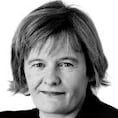A quarter of a century is a long time by anyone’s reckoning. Governments form and fall, families begin and grow up, and artists come and go, their reputations sometimes ebbing and flowing according to nothing more than the insistent rhythms of life.
The Irish Traditional Music Archive saw the light of day in 1987, when Nicholas Carolan, its director, first rented space in what is now the Irish Film Institute, in Temple Bar, and was then owned by the Religious Society of Friends – a building more commonly referred to as the Quaker meeting house.
Established with Arts Council funding, the archive is a national reference and resource centre for the traditional song, instrumental music and dance of Ireland, a one-stop shop where musicians, music lovers, researchers and the simply curious can dip a toe in or dive into our traditional-music heritage.
0 of 3
Musicians come seeking tunes, singers trawl for songs and lyrics, and students look for source material for research. Artists such as Iarla Ó Lionáird have been known to phone from studios abroad, up against recording deadlines, in search of lost song verses.
Although some might assume that the archive is forever focused on the past, Carolan emphasises its role as a repository of contemporary traditional music. In addition to its rich bequests – check out the remarkable Inishowen Song Project section of itma.ie – the archive’s sound recordings, books and serials, sheet music and ballad sheets, photographs, CDs, videos and DVDs ensure that it is a living, breathing ecosystem that draws its lifeblood from its ties with those who sing, dance and play traditional music at home and away.
And tomorrow night the Irish Traditional Music Archive hosts its first concert: the sold-out Taisce, at the Abbey Theatre. Performers include a new quartet – Liam O'Flynn, Mícheál Ó Súilleabháin, Paddy Glackin and Neil Martin – as well as Matt Molloy, Donal Lunny, Emer Mayock and Len Graham, among others.
Lifelong interest
Carolan is a former teacher from Co Louth with a lifelong interest in the discography of Irish music. Before he laid a record or a book in the archive he visited archives around the world, including the British Library, New York Public Library and Rutgers university jazz archive, in New Jersey, to see how others went about collecting historical and contemporary artistic material.
Carolan's quietly spoken but meticulous personal style is widely known, thanks to the RTÉ television series Come West Along The Road, which is now in its 15th season, and has more than 400,000 viewers.
Carolan is a modernist with a keen interest in the past. Although some people might have harboured sepia-tinged ambitions for a traditional-music archive that would gather historical documents and recordings to preserve them in aspic, Carolan ensures that the Irish Traditional Music Archive stays ahead of the technological curve, capturing the past to preserve and protect it alongside the present (largely though digitisation).
“The whole point of the past is for its use in the present,” Carolan says. “We’re not historically fixated. We’re fixated on the present, on the contemporary tradition. In bringing historical materials out again, our aim is to feed and reinvigorate and enrich our contemporary tradition.”
Are there key differences that differentiate the traditional-arts landscape now from the one of a quarter of a century ago?
“I’ve never come across as many new compositions in Irish music as there are now,” he says. “A 20-year-old brings out a CD, and it has two or three original compositions. That’s an increasing trend. And there’s a big increase in the number of people studying it at third level.
“One thing that strikes me, though, is that there’s a paucity of new song material. There’s a hackneyed playlist of songs, and singers seem to be learning the same few songs off the same few singers and recycling them, whereas we have an enormous wealth of song available. So I think there’s a narrowing of the song tradition, whereas the instrumental traditional has exponentially increased.”
And the future? "Our challenges are almost entirely financial," says Carolan. "There's simply so much traditional music in the world now. Our remit to document and archive not just what is happening on the island of Ireland but to reach what is happening in Irish music from Alaska to Russia and Japan and beyond is certainly something of a challenge. It's an impossible remit in some ways. You couldn't even record everything that's happening in Dublin tonight. But we do what's possible and what resources permit."
The latest arrivals at the archive include original manuscripts from the Sliabh Luachra fiddle player Pádraig O’Keeffe, which capture the unique notation he devised to teach fiddle and accordion across the Rushy Glen. Dating from the 1940s and 1950s, these documents capture the essence of O’Keeffe’s idiosyncratic teaching style. They are a gold mine for musicians anywhere with a soft spot for the lilting phrases of Sliabh Luachra music.
No longer is there a sense of six degrees of separation: the archive’s speedy response to such bequests puts the music within reach of musicians, casual listeners and researchers alike.






















